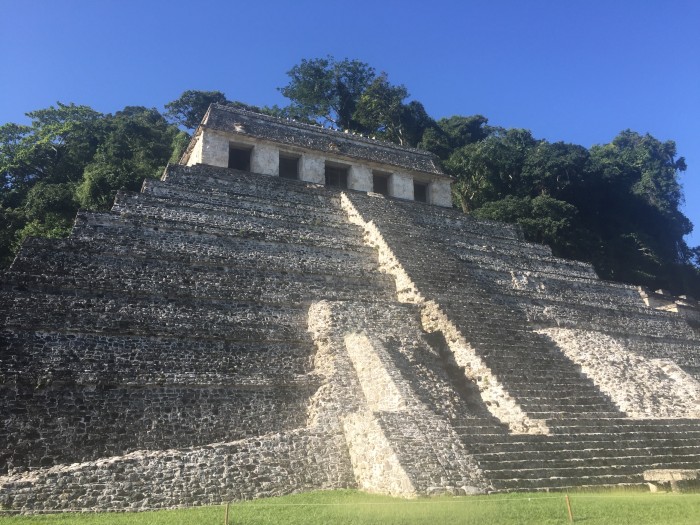Going Mayan
22 February 2020
by Terry Spencer

San Cristóbal de Las Casas is at an altitude of 7200 feet, which explains why I was breathing a bit harder than expected carrying my bags from the bus station to my hotel. It also meant that it was much cooler, especially at night. I had been warned and brought a jacket.
I was entering country that in pre conquest times had been controlled by Mayan tribes. They alternately fought with each other and traded with each other. It was the fighting with each other that allowed 800 conquistadores to conquer the vast region. They simply sided with and coopted a few tribes to fight against the powerful Quiché. They were aided by the diseases they brought with them which eventually reduced the population to a tenth of its original size.
It was nice to see that some of the culture is preserved. Walking the streets and main square, I saw many women in woven dress of traditional colors. Cacao beans are a local product. Because of my choco-addiction, I was obliged to visit the chocolate museum. Later I went off to find some tazcalate, made with chocolate, maize, achiote, pine nuts and cinnamon.
When I am in a new place I like to ask about regional foods or special dishes. On the bus in I struck up a conversation with a woman from San Cristóbal who recommended Asado Coleto (pork in a special Chiapas mole) and Tamales de Bola (a slightly spicier version of regular pork tamales). She also recommended a museum of textiles, but when I went, it was closed, so I contented myself with looking at all the beautiful woven products in an extensive Mercado nearby. It was so big, that at one point, I was not sure how to find the exit.
Another long bus ride brought me over high forested mountains and then downslope into the jungle on the Caribbean side of the peninsula. I arrived in Palenque, the site of some Mayan ruins. This community, and others in the jungle, thrived between 600 – 900 AD. No one is totally sure why all the Mayan cities were abandoned. But the civilization disappeared within a period of about 100 years.
The ruins that are left are astounding. When a pair of explorers, Stephens and Catherwood, began to uncover many of these in the jungle around 1840, Eurocentric archeologists claimed that they must have gotten their architecture and art from ancient Egyptians. But of course, this civilization was both original and advanced, with a system of writing and unique, extraordinary art. The intrepid jungle had grown over and through most of these palaces and temples. Now, with the vines and trees cleared away, it was a delight to climb the steps of some of these pyramids and temples.
Like many of these old Mayan cities, Palenque is only partially restored. Mounds in the jungle, often mean there is an unexcavated building underneath. The restored temples and pyramids at Palenque are marvelous. Although time and the elements have eroded much of the exterior art, one can still see the bas relief figures on the buildings.
In this part of the world, very few people speak English. This has really tested my communication skills. I have been able to get on the right bus, order my food properly, and check in and out of hotels without a glitch now. I still have to ask people to slow down a bit, because my listening comprehension is slow and they often start using vocabulary and expressions that I am unfamiliar with. However, I made arrangements to take a tour to Tikal, near Flores in Guatemala without speaking English.



Comments